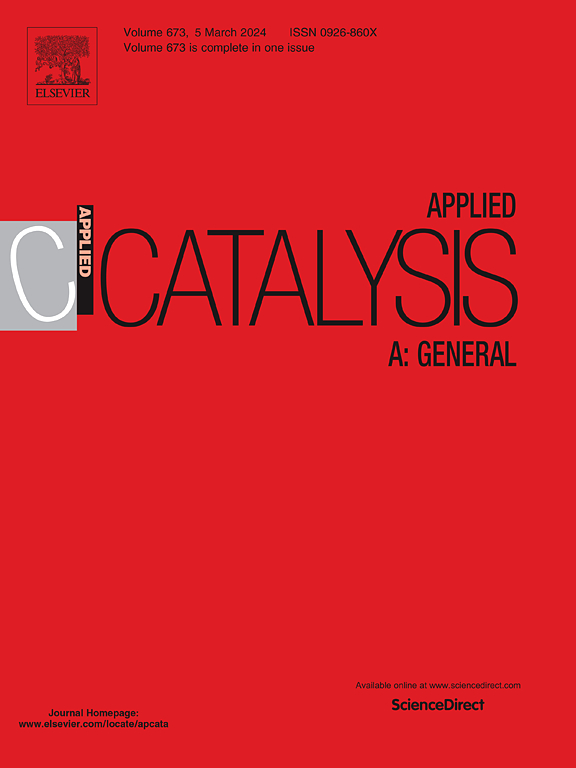二维MOF衍生NiFe-VOx具有高催化活性和耐腐蚀性能
IF 4.7
2区 化学
Q2 CHEMISTRY, PHYSICAL
引用次数: 0
摘要
开发高效耐腐蚀的海水分解电催化剂,不仅可以产生氢气,还可以缓解淡水短缺的问题。在这项工作中,二维Ni- fe金属有机框架在Ni泡沫(NF)上原位转移到nfe - vox /NF。电化学测量表明,优化后的NiFe4-VOx/NF在碱性天然海水中仅需285 mV过电位即可达到100 mA cm−2的电流密度。此外,该催化剂在碱性天然海水中高电流密度下可稳定运行至少100 h。后分析表明,在电化学反应过程中,NiFe4-VOx可以转化为高活性的Fe(Ni)OOH,从而提高了析氧反应(OER)的催化活性。令人兴奋的是,在催化剂表面形成的偏氰酸盐离子可以起到耐腐蚀层的作用,有效地避免氯离子的腐蚀。本研究不仅为海水分裂提供了一种新的催化剂,而且揭示了提高催化活性和耐腐蚀性能的机理,对海水分裂电催化剂的开发具有启发意义。本文章由计算机程序翻译,如有差异,请以英文原文为准。
Two-dimensional MOF derived NiFe-VOx with high catalytic activity and corrosion resistance for seawater splitting
Developing highly efficient and corrosion resistance electrocatalysts for seawater splitting can produce H2 as well as alleviate the shortage of freshwater. In this work, two-dimensional Ni-Fe metal-organic framework on Ni foam (NF) is in situ transferred into NiFe-VOx/NF. Electrochemical measurements demonstrate that the optimized NiFe4-VOx/NF only requires 285 mV of overpotential to achieve a current density of 100 mA cm−2 in alkaline natural seawater. In addition, the catalyst can run stably for at least 100 h at high current density in alkaline natural seawater. The post analysis indicates that during the electrochemical reaction process, NiFe4-VOx can transfer into high active Fe(Ni)OOH, therefore improving the catalytic activity of oxygen evolution reaction (OER). What is exciting is that the metavanadate ions formed on the catalyst surface can act as a corrosion resistant layer, effectively avoiding the corrosion of chloride ions. This work not only provide a new catalyst for seawater splitting, but also reveals the mechanisms for the improved catalytic activity and resistance to corrosion, which can inspire the development of electrocatalysts for seawater splitting.
求助全文
通过发布文献求助,成功后即可免费获取论文全文。
去求助
来源期刊

Applied Catalysis A: General
化学-环境科学
CiteScore
9.00
自引率
5.50%
发文量
415
审稿时长
24 days
期刊介绍:
Applied Catalysis A: General publishes original papers on all aspects of catalysis of basic and practical interest to chemical scientists in both industrial and academic fields, with an emphasis onnew understanding of catalysts and catalytic reactions, new catalytic materials, new techniques, and new processes, especially those that have potential practical implications.
Papers that report results of a thorough study or optimization of systems or processes that are well understood, widely studied, or minor variations of known ones are discouraged. Authors should include statements in a separate section "Justification for Publication" of how the manuscript fits the scope of the journal in the cover letter to the editors. Submissions without such justification will be rejected without review.
 求助内容:
求助内容: 应助结果提醒方式:
应助结果提醒方式:


